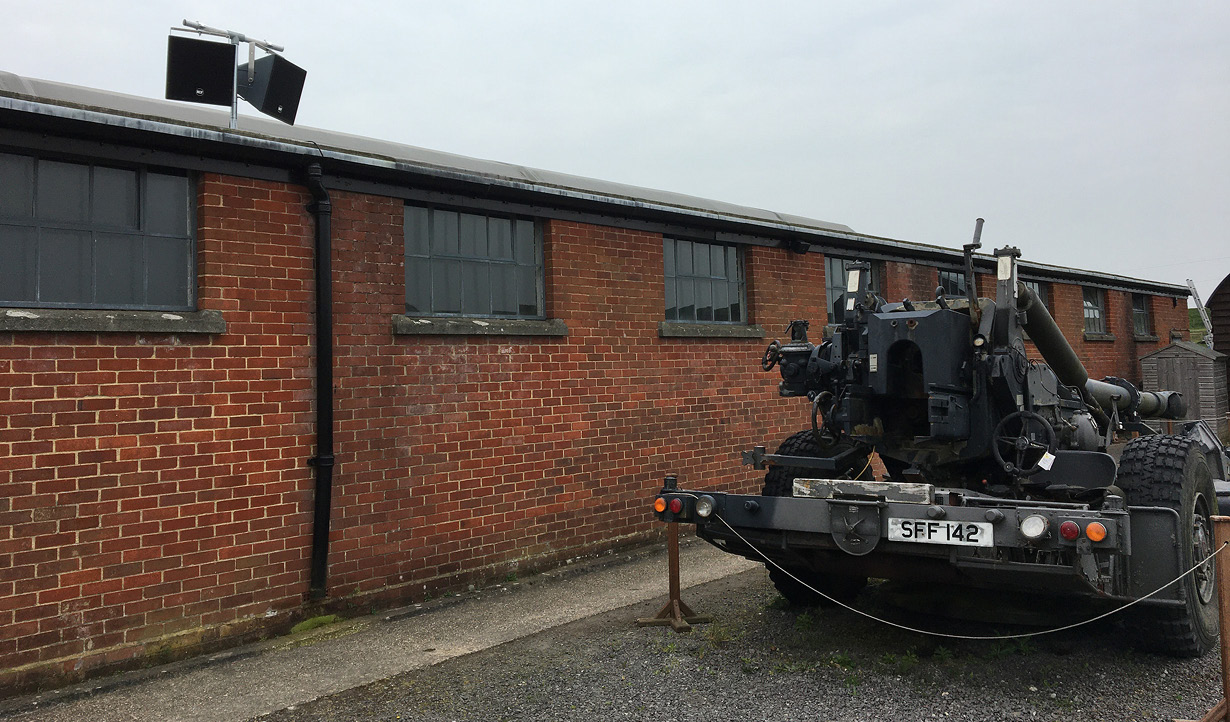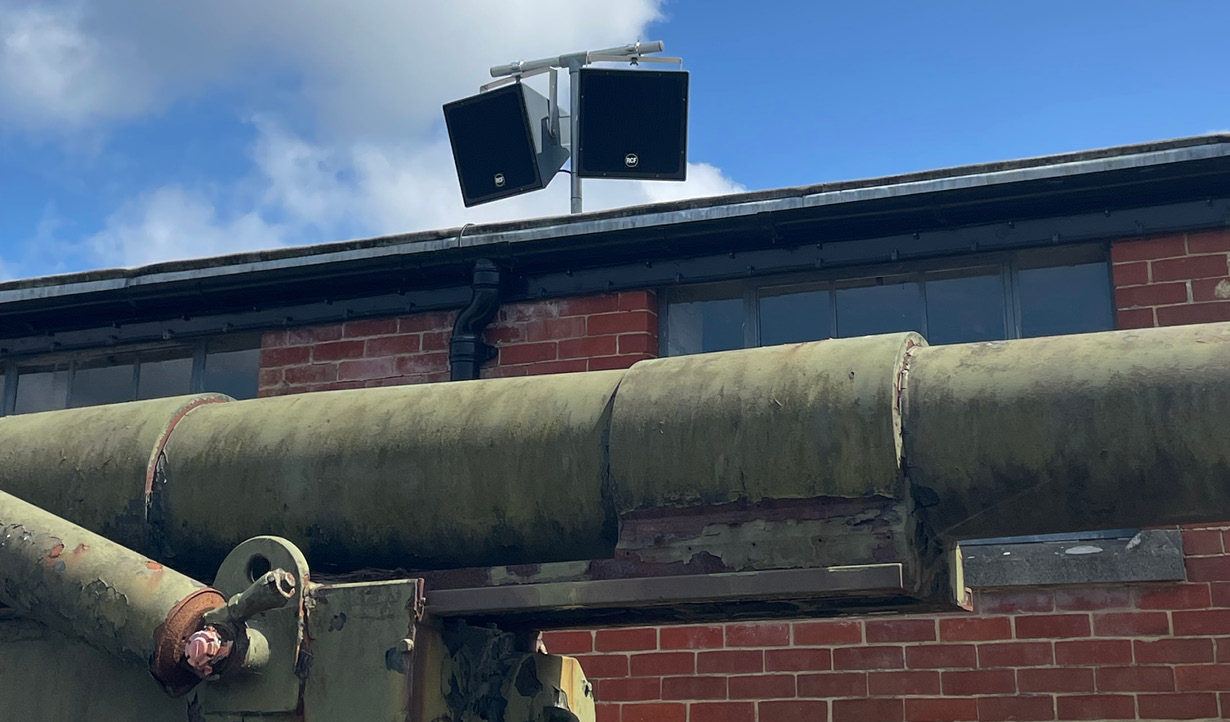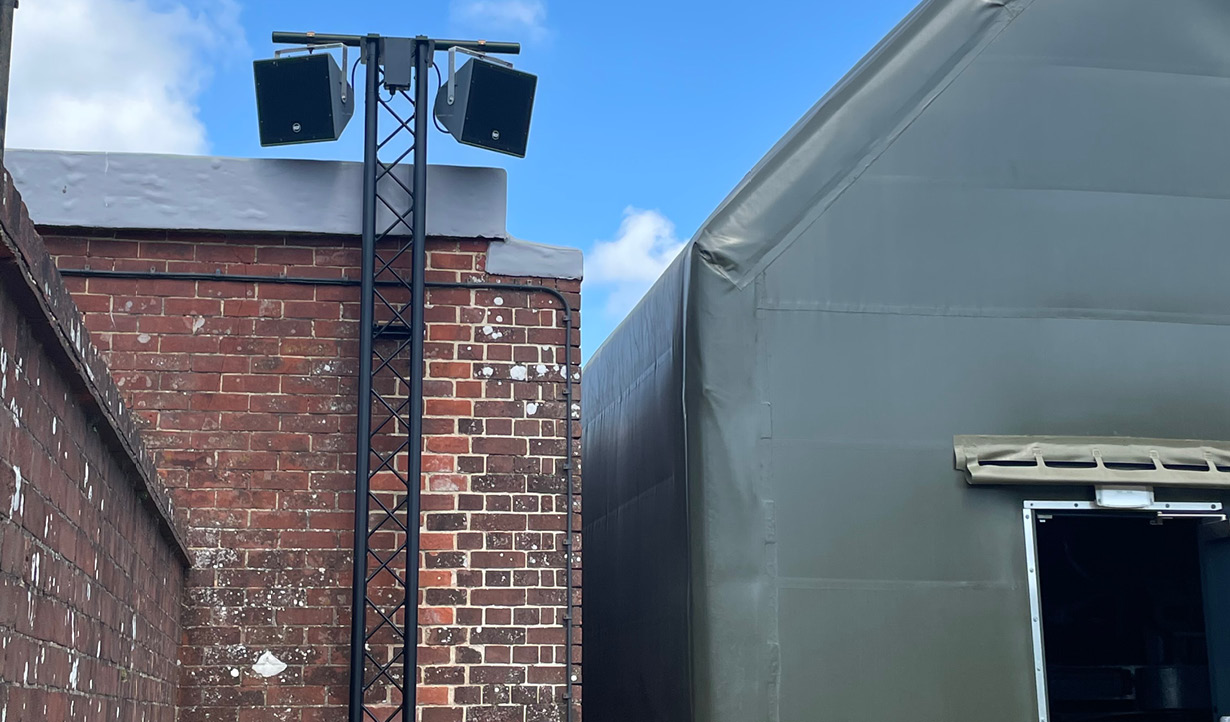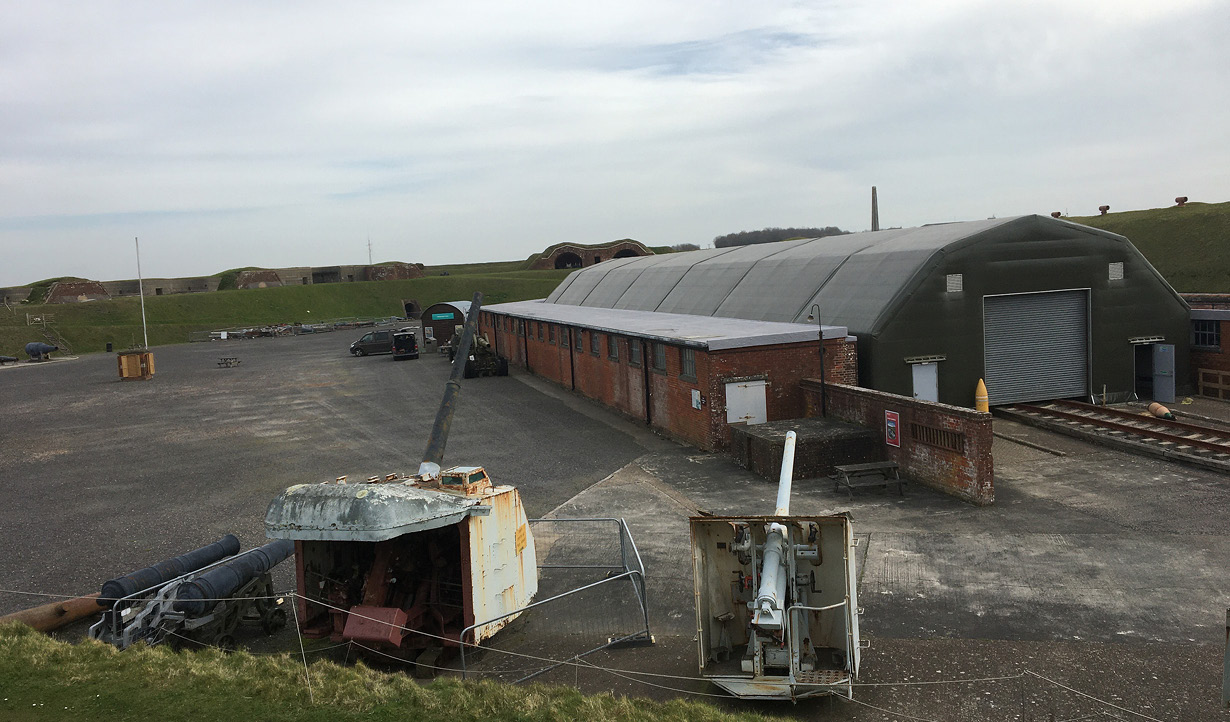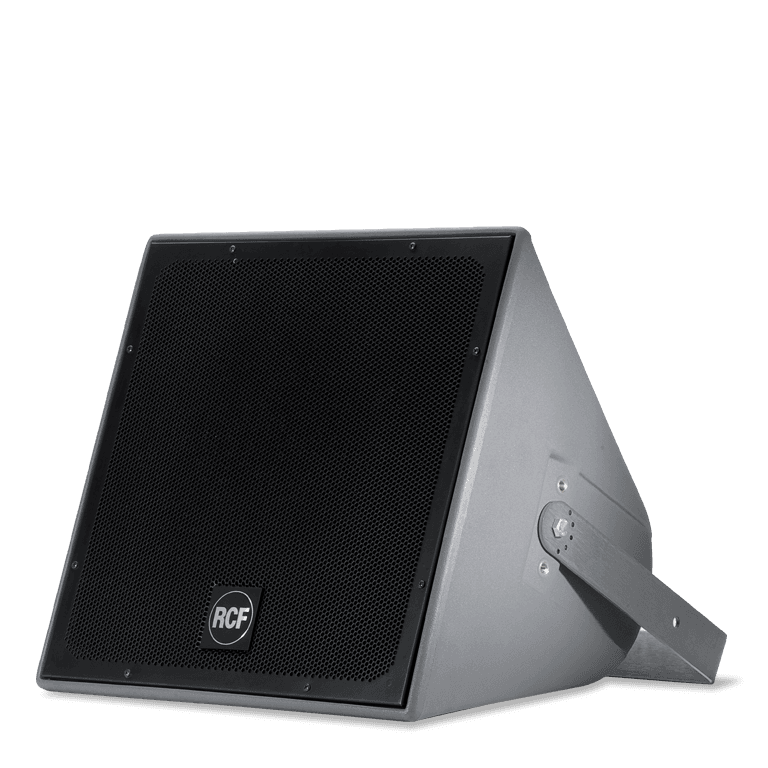RCF P-series for Royal Armouries Fort Nelson parade ground
Fort Nelson is a fully restored Victorian fort on the outskirts of Portsmouth, with its high ramparts, original fortifications, massive parade ground, underground tunnels and stunning panoramic views over the city from the top of Portsdown Hill. Today home to the national collection of artillery, it was originally built in the 1860s to withstand a potential invasion by the French that never materialised.
Fort Nelson is presently hosting the ‘Standing With Giants’ art installation commemorating the Falklands conflict, in which the city played a major role, which was curated and opened back in April. It is the latest in a long line of successful features.
The only thing that had been letting the Royal Armouries facility down was the quality of its sound reinforcement, which provided inadequate coverage and clarity across the feature areas, such as the parade ground and gunnery.
Local specialists Sound Advice AV Installations (SAAV), were awarded the contract after multiple quotes had been sought. Director and project manager Chris Tait undertook a survey and knew instinctively that RCF’s P-series of IP55 rated weatherproof horns would offer best value within the budget.
These are sufficiently versatile to deliver both excellent music across the dynamic range and at the same time reproduce speech with absolute clarity and intelligibility in a compact, lightweight enclosure, which is fast and easy to rig.
Chris Tait takes up the story. “They had an old horn PA system and 100V line amp mixer, but only one of the five horns seemed to be working,” he reports. “With a big parade ground for demos of vintage artillery and so on they wanted a system that would cover the area evenly—and something more than just a 100V line PA.”
He says that having deployed RCF’s P-series several times previously, he knew the P3115T (with 15” woofer and 3in voice coil) would be a good fit with its IP rating, 300W RMS power and 90° x 60° coverage. At Fort Nelson SAAV have installed four speakers in two pairs, each cluster mounted on a T-bar each assigned to different areas of the boomerang-shaped roof—part of an overall three-zone system design. These are accompanied by some smaller infill box speakers.
To ensure its multiple usage for both BGM and spoken word—wrapping in a CD / media player as well as the newly-supplied handheld and headset radio systems—Tait also provided a four-zone mixer for the front end.
Across from the parade ground is a separate gunnery demonstration area which required separate coverage. Since this is a listed building, preventing direct fixing, they inserted a floor-standing quad truss post, mounting a pair of the smaller RCF P2110T LF 10in transducers (to cover that area, matched with separate radio mics for commentary to accompany the firing of the guns.
Finally, on the other side of the building by the entrance to the museum, is a P1108T (8in) for visitors entering the museum.
Lizzie Puddick, Royal Armouries’ Public Engagement Manager, confirmed the success of the installation. “The previous system was outdated and we needed better coverage of the parade ground. The task was to ensure microphone coverage across the entire parade ground, with added facility of being able to use a headset on the West ramparts with a speaker specifically for this area.”
The result is a “vast improvement” on the previous system, she said. “Coverage on the parade is as requested—we are able to zone the sound and the clarity of the material is much clearer.”
Run by partners Chris Tait and Richard Hollis, SAAV have been specifying RCF systems for more than 20 years. “We’ve been using their speakers for pretty much everything,” states Tait.
This ranges from new-build schools to village halls, theatre and school halls and includes gear from their 100V line, commercial audio, public address and voice evac ranges.
“In the case of the Fort Nelson museum, for the price point the P series is unbeatable. We have been able to cover the parade ground area with the minimum number of speakers—which was the ideal approach as we didn’t want to introduce lots of speakers and then have issues with time delays.
“We even had some classical music playing through it, and for size of area it had to cover, the two roof clusters sounded dynamically good and provided even coverage. It can also be run at 129dB(A) max, as there are no issues with sound escape or overspill: there are no neighbours, and the area is surrounded by grass banks and dry moat.”
Finally, he says, dealing with RCF is always an easy process when trying to obtain information. “We are now confident these speakers will be fine up there in the elements for many years to come and will absolutely handle everything thrown at it,” he says in conclusion.
Related products
P 3115T
WEATHERPROOF COAXIAL TWO WAY SPEAKER
- 300 W RMS power handling
- 129 dB max SPL
- 75 Hz ÷ 20000 Hz frequency range
- 15" neodymium woofer, 2.5" v.c.
